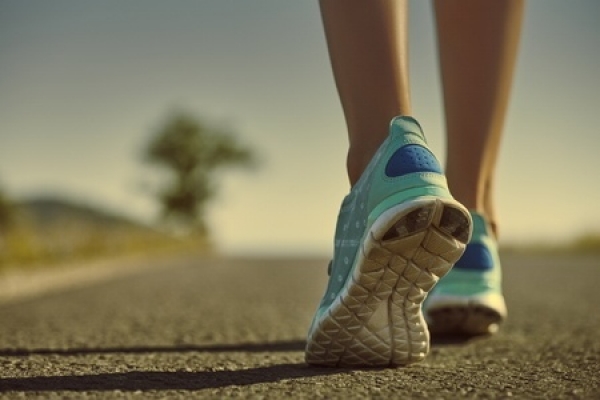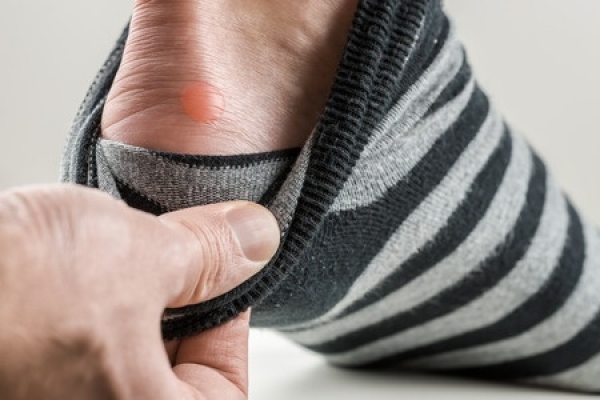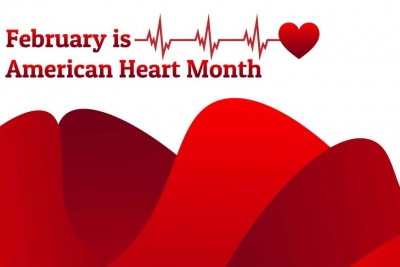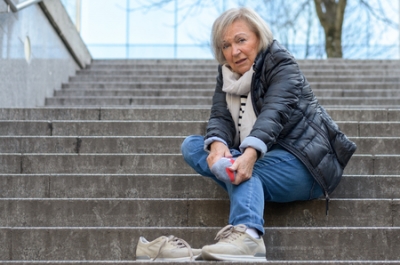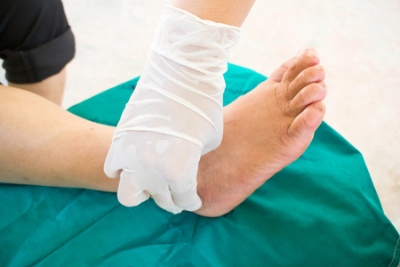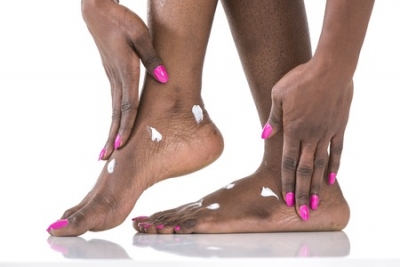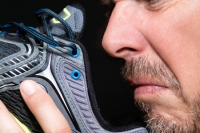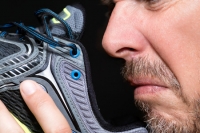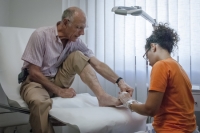Connect With Us
Blogs
Blog
Children categories
At Superior Foot & Ankle Care Center, we want to know, do any of our Douglas Park/Los Angeles County area patients think exercise isn’t good for you and your feet? Who doesn’t want to have better circulation, lose or maintain a healthy weight and decrease the risk for several foot disorders (such as plantar fasciitis and arthritis) as well as conditions such as diabetes and heart disease? Of course, we all do. But even with that being the case, many of us still can’t manage to make regular exercise a part of our routines. Below are some common blocks to exercise and how to break through them.
Barrier: You experience foot or ankle discomfort when you exercise.
Breakthrough: There are many potential reasons for podiatric discomfort ranging from injury, chronic disorders, or even improper footwear. The first step to figuring it out is to make an appointment at our Long Beach office (562-420-9800) so that our podiatrists, Dr. Victoria M. Foley and Dr. Constance Ornelas, can examine your feet and find the source of your pain. The foot doctor can then prescribe the correct treatment to enable you to become more physically active.
Barrier: Too many family obligations to fit in fitness.
Breakthrough: Make exercise a family affair! Meet your children at the bus stop and take a brisk walk before heading inside for homework. Use family leisure time to engage in physically active pursuits like bike riding and hiking. Get chores done and burn calories—raking leaves, weeding and shoveling snow are more fun when done together. You’ll be helping your children and spouse stay active as well.
Barrier: Lack of motivation
Breakthrough: Choose an activity you enjoy. Discover the time of day when you have the most energy and time to work out. Forcing yourself to exercise at 6 a.m. when you’re not a morning person may be the source of your motivational issues. Get social about it. Invite a friend to walk with you on your lunch hour or after work, or join a community team for a sport you like.
The benefits of regular physical activity far outweigh whatever is holding you back. If you have additional questions about fitness and your feet, don’t hesitate to contact us.
What’s smaller than a penny, can be contracted anytime, anywhere and be painful enough to prevent you from being able to walk? A blister. At Superior Foot & Ankle Center, we acknowledge that a blister may not have the long term impact on your exercise program that a stress fracture or Achilles tendonitis would for our Douglas Park/Los Angeles County area patients, but it can make it difficult to carry on for a several days or even weeks if you don’t correct the underlying cause.
Blisters occur when one layer of skin rubs against another and a fluid-filled raised bubble forms as a result. Friction and pressure are the primary causes for the formation of a blister. Knowing this, there are several ways to prevent a blister from forming.
Keep Feet Dry
Sweat and moisture increase friction, which increases the chances of a blister forming. Your goal is to keep your feet as dry as possible. If your sock of choice is 100% cotton, it’s time to make a change. While cotton is great at absorbing sweat, it holds it in the sock and remains damp against your foot. Instead, choose a synthetic blend of materials such as polyester, nylon, spandex or merino wool that wick the moisture away from your skin and through the sock. You may even want to consider wearing two pairs of socks. Dusting your feet with powder before putting on socks will also aid in keeping them dry.
Be Sure the Shoe Fits
Shoes that are too tight will rub and exert pressure on several parts of the foot and can easily result in blisters once you get moving. Even shoes that feel fine when you first lace them up may feel tight as your walk, run or day goes on. The longer you’re on your feet the more they swell. For this reason, it’s best to shop for shoes at the end of the day when your foot is at its largest. Get your foot professionally measured at a sport shoes store and try out new shoes at home for several hours before taking them on the road.
Take an Ounce of Prevention
You can easily slip a piece of moleskin into a pack or your pocket. As soon as you feel a sore spot developing, stop and apply the moleskin to prevent a blister from forming. If you’re on a hike, an extra pair of socks, water bottle and some bandages are other items you might want to have on hand to ward off blisters.
If you notice pus or a foul smell coming from a blister, it may be infected. Make an appointment at our Long Beach office by calling: (562) 420-9800 so our podiatrists, Dr. Victoria M. Foley and Dr. Constance Ornelas, can examine and treat your blister promptly.
February is American Heart Month, and at Superior Foot & Ankle Care Center, we want to recognize this important opportunity for our Douglas Park/Los Angeles County area patients to make healthy changes to reduce the risk of heart disease. Did you know that symptoms of heart disease may show themselves in your feet? Swelling in the lower legs, feet, and ankles and a bluish or purplish discoloration of the skin on your feet and toes may be indicators of a heart problem. If you notice any of these symptoms, it’s important that you contact our Long Beach office for an appointment so that our podiatrists, Dr. Victoria M. Foley and Dr. Constance Ornelas, can examine your feet and determine the cause of these changes in your feet.
Show Your Love
With hearts abounding for Valentine’s Day, we’d like to suggest some heart-healthy ways to celebrate with the ones you love. After all, spending time together in good health is the best gift of all.
Here are a few ideas:
- Take a Dance Class—Romance is in the air when you and your beloved take to the dance floor. And you’ll also be getting exercise. Staying active is a key factor in reducing the risk of heart problems.
- Cook a Delicious Dinner Together—Healthy eating doesn’t have to be boring! Fill your plates with a colorful array of vegetables and fruits. Incorporate lean proteins like skinless chicken and fish into your menu. Experiment with cuisines from around the world. Add flavor instead of fat with exotic seasonings. Light the candles, and you’re all set!
- De-Stress Times Two—Stress increases blood pressure and puts extra strain on your heart. Find new ways to relax together. Splurge on a couple’s massage. Take a long walk in a new park or part of the city you haven’t been to before. Pray or meditate together.
Cultivating healthy habits with the one you love will help ensure a long life together. For more ways to be proactive about your podiatric health, contact us by calling: (562) 420-9800.
At Superior Foot & Ankle Care Center, we know that one of the major fears our Douglas Park/Los Angeles County area senior patients have is falling. And with good reason: falls are the number one cause of fatal injuries to older people. It’s estimated that up to 50% of all patients 65 and older will suffer a fall in the upcoming year. There’s no reason to let fear keep you in your armchair, however. Much can be done to prevent falls. Below are six suggestions.
- Know your risk. Some factors indicate you have an elevated risk of falling. These include:
- Falling within the last year
- Having impaired vision
- Recent foot or ankle surgery
- Balance problems
- Decreased sensation or weakness in your lower extremities
- Take care of your feet. Our podiatrists, Victoria M. Foley and Dr. Constance Ornelas specialize in senior foot care and are your partners in preventing falls. A major reason for falls is putting off getting foot or ankle pain evaluated and treated. Schedule regular appointments at our Long Beach office so that the foot doctor can monitor chronic problems you have such as bunions and hammertoes, which can become more painful over time. If a new podiatric problem develops or an old gets worse, contact us immediately by calling: (562) 420-9800.
- Re-evaluate your footwear. Your shoes can cause or prevent a fall. Don’t wear high or unstable spiky heels. Don’t choose styles that have smooth soles but instead look for a non-slip tread. Avoid flip-flops and slippers that don’t securely fit on your feet. Discard old, stretched out shoes and those with holes or damage.
- Conduct a home safety inspection. Remove tripping hazards like throw rugs, magazine stands and electrical cords from walkways. Be sure there is adequate lighting throughout the house and stair and grab rails where needed.
- Stay on top of medical conditions. Changes in vision, medications that cause you to feel dizzy, heart, blood pressure or other conditions that can make you pass out all need to be monitored with regular checkups. Report any symptoms that affect your balance to your doctor promptly.
- Be active. Regular exercise helps reduce stiffness and keeps your feet and legs limber and flexible. Focus on exercises that increase balance as well.
If you have additional questions about foot health for seniors, contact us today.
At Superior Foot & Ankle Care Center, we find that sometimes our Douglas Park/Los Angeles County area patients are quick to diagnose well-publicized foot or ankle disorders on their own and mistakenly think they don’t need to make an appointment at our Long Beach office to get it evaluated. One of these is a hammertoe. Sometimes, however, what appears to be a hammertoe may actually be an issue with the plantar plate ligament.
Plantar Plate Ligament vs Toe Deformity
In both the case of a hammertoe and a plantar plate ligament injury, the bending of the toe at the joint in a downward fashion to resemble a hammer may be present. However, if the toe involved in the second toe, further investigation is needed. The plantar plate ligament provides netting like structure that spreads out under the second toe and helps to distribute the tension put on the foot. For most patients with a hammertoe, the pain is usually on the top of the toe where it rubs up against shoes. In the case of a plantar plate ligament issue, however, the pain if more often in the ball of the foot and can be fairly intense.
Treatment
Hammertoes have both conservative and surgical treatment options available. It is a progressive condition, however, and will only get worse over time. The best long-term results for plantar plate ligament injury is surgery that is considered fairly minor with approximately a six-week recovery period.
So, the bottom line is, if you notice that one or more of your toes appear to be moving into an abnormal position or you experience any pain or discomfort in your toes or feet, it’s best to contact us and come see our podiatrists, Dr. Victoria M. Foley and Dr. Constance Ornelas, to get your problem professionally diagnosed. The foot doctor will be able to find the source of your discomfort and prescribe the correct treatment to keep you on your feet.
At Superior Foot & Ankle Care Center, we recommend that our Douglas Park/Los Angeles County area patients inspect their feet regularly. One thing to look for is changes in the skin on your feet. There are several podiatric conditions that are related to the skin and, although seemingly minor, can develop into major medical issues if not treated promptly.
Here are some of the more common skin conditions we treat and what you can do to prevent them:
Sunburn—yes, even in the winter months if the temperatures are warm enough for you to wear open sandals and shoes that expose the skin on your feet, sunburn can occur. UV rays can quickly damage skin and lead to skin cancer. Always apply a broad-spectrum sunscreen with a minimum SPF of 30 if your feet will be in the sun. Carefully check the skin on your feet, including the spaces between your toes, for moles or freckles and contact our Long Beach office (562-420-9800) immediately if you notice changes.
Fungal Infection—athlete’s foot and other skin infections can cause skin to be red, dry and flaky and be accompanied by insanely irritating itching. Left untreated, a bacterial infection may also develop, and the initial infection can spread to toenails and other parts of the body. Your best protection from fungal infections is to keep feet from coming in contact with them by wearing shoes whenever you are in a public place. Don’t share shoes, emery boards, towels, or other items that touch someone else’s feet. If you get professional pedicures, be sure the salon you use follows proper sanitizing methods for footbaths and tools.
Blisters—these small, fluid-filled sacs that form as the result of friction between foot and footwear can have a big effect on your ability to walk because of the pain they can cause. The best way to prevent blisters is to ensure that your shoes fit properly and have no rough spots inside that rub on your feet. Friction can also occur if your feet are sweaty. Keep feet dry by applying a foot powder before putting on your shoes.
If you notice any unusual changes in the skin on your feet, let our podiatrists, Dr. Victoria M. Foley and Dr. Constance Ornelas, examine them and determine if there is a condition developing that requires treatment.
At Superior Foot & Ankle Care Center, we see it happen every year: our Douglas Park/Los Angeles County area patients resolve to get in shape in the New Year and soon after are in our Long Beach office with a foot or ankle injury. Many of these injuries could have been prevented by taking the appropriate precautions.
Here are three common injuries related to exercise and how you can avoid those injuries:
- Achilles Tendonitis—the strongest and thickest tendon in your body runs down the back of your lower leg connecting your calf muscle to your heel bone. If you experience pain, swelling, or general discomfort or sluggishness in this part of your leg, you may have Achilles tendonitis. This is an inflammation of the tendon that can be caused by a sudden increase in activity after being sedentary for a period of time. Stretching, wearing appropriate footwear and gradually increasing activities such as running or stair-stepping will help minimize your risk for this disorder.
- Shin Splints—this condition’s signature symptom is pain on either side of the muscles or tendons surrounding the front of your lower leg bone. Shin splints can be caused by overuse or a stress fracture, or imbalance between opposite leg muscle groups. Because of the number of possible sources, it’s best to get shin splints evaluated by our podiatrists, Victoria M. Foley and Dr. Constance Ornelas. Corrective shoes or custom orthotics may be necessary to eliminate the problem.
- Plantar Fasciitis—the plantar fascia is a band of tissue that is on the bottom of your foot. Significantly increasing the amount of walking or running you do can aggravate this tendon and can cause pain in the arch or heel of your foot. If the foot doctor diagnoses plantar fasciitis, you may need shoes with better arch support or more cushioning in the heel. In some cases, orthotics may be prescribed to make exercise more comfortable.
The bottom line is that getting in shape should not cause foot or ankle discomfort. If you find you have painful podiatric symptoms after starting a new exercise routine, don’t wait. Contact us by calling (562) 420-9800 for an appointment and get to the source of the pain before it becomes a debilitating injury.
At Superior Foot & Ankle Care Center, one issue we notice, our Douglas Park/Los Angeles County area patients are often hesitant to bring up is foot odor. Smelly feet can be embarrassing, but it’s important that you discuss it with podiatrists, Dr. Victoria M. Foley and Dr. Constance Ornelas because sometimes it can be a sign of a fungal infection or another medical problem that needs to be addressed.
What Stinks?
The cause of the odor is usually a bacteria and/or fungus that is in your shoe and combines with the sweat on your skin to produce the foul odor. In some cases, a medical condition known as hyperhidrosis can be the source of year-round perspiration and stinky feet. If this is the cause of your smelly feet, the podiatrist can discuss treatment options with you. In most cases, however, some simple precautions can help you avoid the fungal infections that cause smelly feet.
- Wash your feet with soap every day and take the time to dry them completely. Be particularly diligent about drying the spaces between your toes as this is often the starting place for athlete’s foot.
- Don’t allow feet to stay in damp socks. Keep extra socks in your bag or desk and change multiple times a day if necessary. Moist, dark places are the ideal breeding ground for fungal infections.
- Never share shoes, socks, nail clippers, towels, or other items that touch another person’s feet.
- Avoid socks and stockings that are constrictive and trap moisture against your skin. Choose shoes made from breathable materials and have space to allow air to circulate around your feet.
- Alternate your shoes—don’t wear the same pair multiple days in a row.
- Keep feet covered by wearing flip-flops or shower shoes at the gym, community pool, nail salon or any other public place.
- If you notice red, itchy skin that’s scaly and/or blistering or toenails that are becoming thick and discolored, make an appointment at our Long Beach office by calling: (562) 420-9800.
It’s time for New Year’s resolutions, and at Superior Foot & Ankle Care Center, we know that many of our Douglas Park/Los Angeles County area patients will be thinking about starting new exercise regimens. One of the best and easiest fitness activities you can do is walking.
Some benefits of walking include:
- It’s a great choice if you have been inactive for a period of time.
- Walking has a host of health benefits: improved circulation, helps with weight loss or maintenance, reduces stress, lowers cholesterol, high blood pressure, and high blood sugar, to name a few.
- Walking can be done indoors or out.
- You don’t need expensive equipment—just a good pair of walking shoes.
- It can be done with others or on your own.
- You can take it with you wherever you go.
Getting Started
Before you begin any new fitness program, you should consult your physician. It’s also a good idea to make an appointment at our Long Beach office (call: 562-420-9800) for a podiatric checkup. Our podiatrists, Dr. Victoria M. Foley and Dr. Constance Ornelas will want to do a complete foot and ankle examination. If you have any chronic podiatric conditions such as bunions or plantar fasciitis, the foot doctor will want to evaluate how that condition has progressed and alert you to specific shoe features that will make walking safer and more comfortable. Once you’ve got the green light from your doctors, take the next steps:
- Purchase a pair of good quality shoes designed specifically for walking. Shoes should have a firm heel counter, good arch support, thick, cushioned sole for excellent shock absorption and plenty of room in the toe box. It’s best to go to a sports shoe store and get the assistance of professional. Have your feet measured and let the salesperson know if the podiatrist has told you anything particular about your gait or pronation.
- Make a plan. There are many walking programs available or you can just start on your own. What’s important is that you start off slowly and gradually build up your speed and the duration of your walking. Too much too soon can result in Achilles tendonitis and muscle strains.
- Stay accountable. You may want to enlist a friend to walk with to help you both stay on track. If going it alone, try to commit to a certain number of times a week, and best, if it’s at specific times and days to ensure you stick to your plan. Put walking dates on your calendar.
- Be sure to warm up and stretch before and after your walk. If you experience any pain or discomfort, contact us to get it checked out.
At Superior Foot & Ankle Care, we want all of our Douglas Park/Los Angeles County area patients to be vigilant about good foot care. For patients with diabetes, however, this is even a more critical concern. Diabetes, also known as hyperglycemia, is a condition where blood sugar levels are not normal. If not properly controlled, the immune system can be compromised and infections difficult to heal. For your feet, the added complications commonly associated with diabetes—neuropathy (loss of sensation) and poor circulation can mean disastrous and debilitating results. This leaves diabetic patients at increased risk for several conditions, including fungal infections, ingrown nails, calluses, hammertoes, corns, and skin problems. You can, however, prevent damage from diabetes by taking some extra care with your feet and avoiding potential problem scenarios. Here are six ways to ensure good foot health if you have diabetes:
- Schedule regular appointments with our podiatrists, Victoria M. Foley and Dr. Constance Ornelas. The foot doctor will carefully monitor your feet for any changes that may signal an infection or ulcer forming. The podiatrist can also advise you on proper foot care and prescribe treatment for new or existing conditions.
- Develop a daily care regimen. Wash feet with warm—not hot—soapy water and dry thoroughly, particularly between your toes. While you clean your feet, look them over for signs of developing problems such as skin color changes, swelling, sores, cuts or blisters, bruises, and redness. Report anything suspicious to our Long Beach office immediately by calling: (562) 420-9800.
- Choose shoes wisely. Make sure they do not pinch or rub anywhere that can cause a Look for styles with a wide roomy toes box and soft leather uppers. Avoid high heels.
- Keep feet dry. Wear absorbent socks (with no seams or tight elastic bands) and change them as soon as you notice your feet feel damp. If your feet tend to sweat profusely, use an anti-fungal foot powder each morning to reduce the risk of athlete’s foot.
- Take care of toenails or let a professional handle. Nails should be trimmed straight across and not too short. File rough edges to prevent them from catching and tearing.
- Protect circulation by not smoking, changing position frequently and exercising regularly.
If you are diabetic and have more questions about how to best care for your feet, contact us today.
More...
At Superior Foot & Ankle Care Center, we are confident that if your feet could talk, they’d say all they want for Christmas is a pair of well-made, properly fitting shoes. Wearing shoes that are ill-fitting and of lesser quality can result in a host of ankle and foot problems and even injuries and foot deformities over time. Especially during the busy holiday season when you’re on your feet more than ever, it’s essential to have good shoes. Below are some tips on getting the best for your feet.
Start with a Checkup
If you haven’t been in a while or you have a progressive podiatric condition such as a bunion or flat feet, make an appointment at our Long Beach office by calling: (562) 420-9800. Our podiatrists, Dr. Victoria M. Foley and Dr. Constance Ornelas will examine your feet and ankles and, depending on your disorder, may order x-rays or other imaging studies to see how your condition is progressing. The podiatrist can then make recommendations about shoe designs that will give you maximum comfort and minimize biomechanical issues spurring on your condition. If the podiatrist prescribes an orthotic device, you’ll want to take it with you when shoe shopping to make sure the footwear you choose can accommodate it.
Go to a Professional
Your feet are too important to leave shoe choice to chance and guesswork. Go to a reputable shoe store. There you should find knowledgeable staff who can measure your feet to ensure the correct size and also direct you to shoes that will best suit your feet and the activity you plan to use them for.
Shop for Quality
Some general characteristics of a good shoe or boot include:
- Soft, breathable material for the uppers that allows toes to wiggle freely
- Thick soles for shock absorption
- A good, non-slip tread
- Cushioned insole
- Heel height of 2 inches or less—but not completely flat
- Adequate support in the arch
Get a Good Fit
Shop at the end of the day—that’s when your feet are at their largest and most swollen. Always try on both shoes with the type of socks you would typically wear with them and take your time walking around the store to make sure they feel comfortable.
Follow these simple tips and we know that feet throughout the Douglas Park/Los Angeles County area will enjoy a holiday that’s merry and bright!
At Superior Foot & Ankle Care Center, we know that our parents in the Douglas Park/Los Angeles County area, just like parents everywhere, may have difficulty discerning when their children have a foot problem versus average complaining, aches, and pains, etc. Good podiatric health starts at birth, and proper care of the feet is necessary throughout childhood to prevent foot and ankle problems in adulthood.
As They Grow
For infants, a tremendous amount of growth occurs in the feet during the first year. For this reason, feet should be unrestricted and free to stretch, move, and kick freely. Avoid excessively confining footwear for babies. As your child becomes a toddler, they will start to walk—when they are ready. Don’t force children to take steps prematurely. Don’t be alarmed if your toddler appears to be in-toeing or walking with another strange gait at first. Over time, most children grow into a normal walking pattern. The most important factors in preventive podiatric care for children are good hygiene and properly fitting shoes. You should check where your child’s foot is in their shoes frequently as little feet can grow quickly.
Spotting a Problem
So just how do you know if your child is experiencing a foot problem? Since children are not always able to accurately articulate a foot or ankle problem, parents sometimes have to become sleuths and look for clues that may indicate an issue. Some tip-offs to foot trouble include:
- Walking on tiptoes
- Frequently tripping or falling
- Not wanting to engage in physical activities they have previously enjoyed
- Lagging behind friends in backyard play
- Complaining that their feet feel “tired”
If your child exhibits any of the above consistently or complains of foot or ankle pain, make an appointment at our Long Beach office by calling: (562) 420-9800. Our podiatrists, Dr. Victoria M. Foley and Dr. Constance Ornelas will examine your child’s feet and determine if a podiatric problem exists and the best treatment.
It’s beginning to look a lot like gout season here in the Douglas Park/Los Angeles County area and we at Superior Foot & Ankle Care Center want to help our patients learn more about this condition and how to avoid it.
Gout is a form of arthritis—in fact, it is sometimes referred to as gouty arthritis. This condition occurs as the result of a buildup of uric acid in the body, which then crystallizes in the joints causing extreme pain, throbbing, burning and tenderness in a joint, stiffness and decreased range of motion. Uric acid is a byproduct of the breakdown of purines, a chemical that is found naturally in the body and in certain foods. Risk factors for developing gout include:
- An inherited tendency for gout
- Obesity
- High blood pressure
- Diabetes
- Chemotherapy
- Recent surgery
- Stress
- Certain medication and vitamins
Although gout can strike men and women at any age, it is most commonly seen in men ages 40 to 60.
Why Now?
You may be wondering why gout is more prevalent during the holiday season. Two factors are at play here. First, the most frequent site of gout—your big toe—is under extra strain during the holiday season with all the errands to run, shopping to do and long hours spent standing in line or socializing. Second, gout attacks can be triggered by particular foods, many of which are part of traditional holiday fare. If you have suffered from gout in the past, you may want to avoid overindulging on red meat, shellfish, red wine, organ meats, beer, and rich sauces. Drinking plenty of water will also help your body naturally flush out excess uric acid.
Treatment Options
The bad news about gout is that if you’ve had it once, you’re likely to suffer future attacks. If you have a gout attack, contact our Long Beach office for an appointment by calling: (562) 420-9800. Our podiatrists, Dr. Victoria M. Foley or Dr. Constance Ornelas will examine your feet and may prescribe medication to deal with symptoms of gout. Other parts of your treatment plan will address prevention with medication and lifestyle choices.
Few podiatric conditions inspire more fear and are more painful than the ingrown toenail. At Superior Foot & Ankle Care Center, we treat many cases of ingrown toenails in our Los Angeles County/Douglas Park area patients. Nearly every patient leaves our Long Beach office in less pain then when they arrived. The information below will help you deal with this common podiatric problem.
Prevention Pointers
Of course, the best scenario is not having an ingrown nail in the first place! Ingrown nails develop when pressure on the edge of the nail drives it into the surrounding skin. The most frequent reason this occurs? Improper nail trimming. Trim your toenails straight across and not so short that the skin overlaps the edge of the nail. Do not curve the edges when you clip or file the toenails. Other sources of ingrown nails include:
- Fungal infections—keep feet clean and don’t allow them to sit in damp socks for extended periods of time
- Footwear choices—avoid styles that have narrow, pointy toes and high heels that force the toes to be crammed together.
- Toe deformities—overlapping toes, hammertoes and other deformities may increase the risk of ingrown toenails.
- The tendency for nails to become ingrown can also be inherited.
Treatment Do’s and Don’ts
The first sign of an ingrown nail will most likely be pain and redness. Big toes are the most susceptible. If you notice a nail appears to be ingrown, you can soak it in warm water and Epsom salts and then try to gently massage the nail out of the skin. Never attempt to cut the ingrown nail out! If this is unsuccessful, make an appointment and come in to see our podiatrists, Dr. Victoria M. Foley or Dr. Constance Ornelas. The foot doctor can numb the toe and remove the nail. Chronic or recurring ingrown nails may require a minor surgery.
Don’t delay seeking treatment. Ingrown toenails that are not care for properly can become infected. Contact us by calling: (562) 420-9800.

